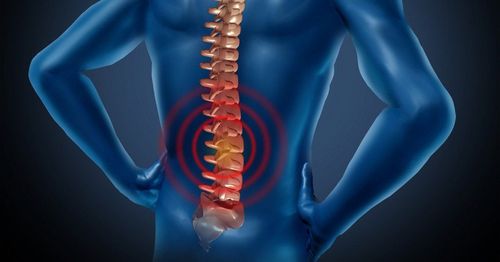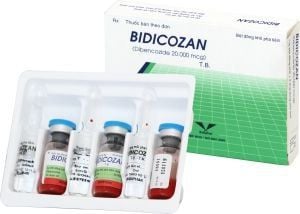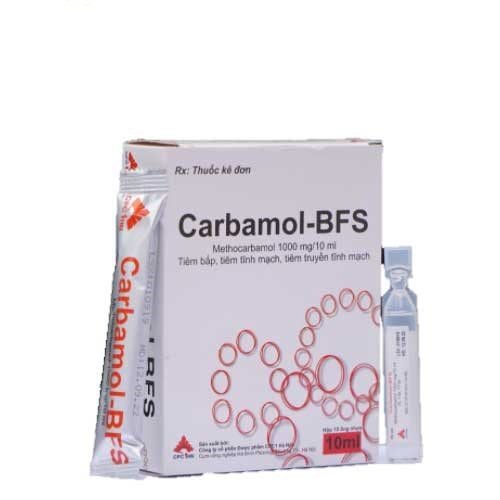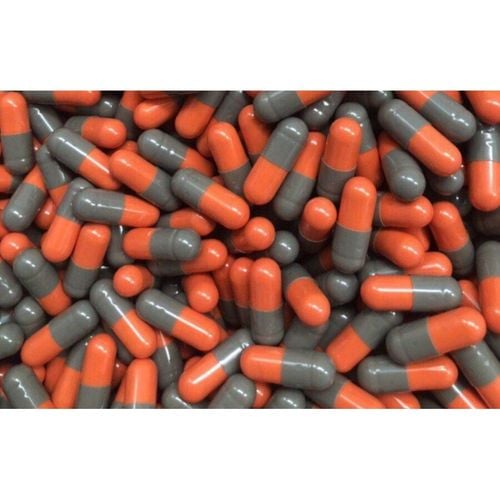This is an automatically translated article.
From the spinal cord separates the spinal nerves, the first part of the nerve is called the nerve root. After the nerves are separated, they will pass through the spinal fissures on both sides to control the activities of organs and parts in the body. When the nerve root is damaged, it will affect the functioning of the organs it governs, depending on the damaged nerve root, the patient will have different symptoms. Why is there nerve root damage?
1. Causes of nerve root damage
Along the spine, we have 31 pairs of spinal nerves divided into 5 groups that are:
Cervical nerves: 8 pairs. Thoracic spinal nerve: 12 pairs. Lumbar spinal nerve: 5 pairs. Vertebral nerves: 5 pairs. Spinal cord: 1 pair. All of these nerve roots can be involved, but the most common are the cervical and lumbar-sacral nerve roots.
Causes of nerve root damage include:
Herniated disc due to trauma: the disease appears suddenly after an injury, or after carrying heavy objects, wrong posture. Pathological herniated disc: no traumatic cause was found in these patients, but the mucinous nucleus of the disc escaped. The disc may herniate laterally or posteriorly, compressing a left or right nerve root, or both. It is very rare that there is a herniated disc where the mucinous nucleus puts pressure on the anterior and lateral sides of the spinal cord and the posterior aspect of the nerve roots. This case is called spinal cord-nerve root coordination disease due to disc herniation. . Degenerative disc: the disc is degenerated, dehydrated, thick bone grows around the cartilage plate, extending to the back and to the side, causing gradual compression of the nerve roots. Spinal degeneration Spinal and paravertebral tumors Radial radiculitis as in polyneuropathy Radial tumors
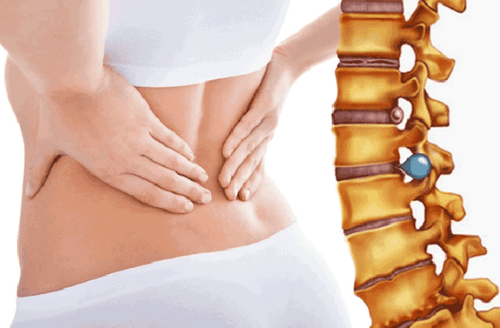
Thoát vị đĩa đệm có thể là nguyên nhân gây tổn thương rễ thần kinh
2. Symptoms of nerve root damage
When a nerve root is damaged, the symptoms will depend on the cause and which nerve root is damaged, not every patient is the same.
2.1. Root canal disease
In most cases, the patient has only one nerve root compression and only one side of the neck, shoulder, and arm hurts. However, there are a small number of cases where more than one nerve root is involved, and sometimes both sides are involved. Possible clinical symptoms are:
Neck pain: patients have neck pain, especially when neck movements such as bending or tilting the neck, turning the neck to the left or right can also increase the pain. Sometimes the pain is so severe that the patient cannot lie down, very uncomfortable. Shoulder pain that radiates down the arm, forearm, hand and possibly the fingers: pain along the pinched nerve root. This is a specific type of neuropathic pain, the patient will feel it clearly, and the pain path can be clearly indicated, that is, according to the sensory band of the pinched nerve root. Based on this feature, the doctor can identify which nerve root is being compressed. Neck fatigue: sometimes pain symptoms are not clear, patients only feel neck fatigue. Numbness along the sensory line of the pinched nerve root: numbness from the neck of the shoulder to the thumb or third and fifth fingers. The affected muscle may be weak or rapidly atrophied: the patient may have biceps, triceps, or interstitial atrophy of the hand, depending on the nerve root being compressed.
2.2. Lumbar nerve root injury - along
When the lumbar nerve root is damaged, the patient may have the following clinical symptoms:
Nerve root pain: usually occurs in the later stages of local back pain. Nerve root pain is characterized by pain that radiates along the path of the nerve from the lumbar region down the back or side of the lower leg, to the foot. Symptoms of pain are mechanical, pain increases when sitting for a long time, standing for a long time, walking, coughing, sneezing or pushing. Relieve pain while resting in bed. If radiculopathy is persistent, does not subside with rest, and does not respond to conventional pain medications, it may be due to a radiculopathy, arachnoiditis, or bone compression. Patients may have paresthesias in their feet such as sadness, ants, needles, etc. In severe cases, sphincter disorders may occur, and patients may have bowel and urinary disorders. . During clinical examination, the doctor may detect the following symptoms:
Ringing sign: when the doctor presses on the pain point next to the lumbar spine, the patient will experience pain spreading along the path of the cord. nerve. Valleix score: are pain points along the path of the sciatic nerve. Includes: Midpoint of the dorsal dorsum and great trochanter, Midpoint of the gluteal crease, Midpoint of the posterior thigh, Midpoint of the popliteal fold, Midpoint of the arch of the calf muscle, Lasegue sign: the patient lies supine, legs extended. The doctor stands beside, slowly lifts each leg of the patient off the bed, keeping the knee straight to stretch the nerve root, if the patient has ipsilateral radicular pain, it is positive, and if the pain is on the opposite side is cross laser. The degree of this sign is measured by the angle formed by the bed surface with the patient's foot at the time of onset of pain. Decrease or loss of sensation: often patients will have a decrease in superficial sensation in the area of the skin corresponding to the nerve roots, deep sensation is often not significantly reduced. Movement disorders: If the L5 nerve root is damaged: the patient will have reduced muscle strength in the front of the leg, the movement of the foot off the ground is weak, so the patient cannot walk on the heel. . The strength of the extensor muscle of the big toe is reduced, and the patient may have atrophy of the anterior lateral leg. If the S1 root is damaged: the patient will have reduced muscle strength in the back of the leg, possibly decreased muscle tone and muscle atrophy. The patient has weakness in plantar flexion and toe flexion 1. This makes it impossible for the patient to walk on tiptoe, but has to walk on tiptoe. If many nerve roots are damaged: the patient may have paralysis, paralysis of both legs. Reflex disorder: If L3, L4 nerve roots are damaged: the patient will have reduced or lost patellar tendon reflexes. If the S1 nerve root is damaged: the patient will have reduced or lost tendon reflexes. Sphincter disorders: if the S3, S4, S5 nerve roots are damaged, it can cause peripheral sphincter disorders. Initially, the patient often had urinary retention, later on, bedwetting was not active.
3. Treatment of nerve root damage
Conservative treatment measures include::
Rest The patient should wear a soft neck brace or lumbar belt for the first few weeks of treatment. Limit neck or waist movement Avoid sudden, wrong postures. Some drugs can be prescribed such as: anti-inflammatory pain relievers, muscle relaxants, nerve stimulants, sedatives,... Stretching the cervical or lumbar spine with specialized tractors Physics therapy

Nghỉ ngơi nhiều sẽ có lợi cho bệnh nhân bị tổn thương rễ thần kinh
For severe cases of nerve root compression, after 6 months of conservative treatment there are no results or symptoms are aggravated, surgery will be required to remove the herniated disc part, anterior intervertebral fusion. , with or without metal screw fixing.
Metal splint is indicated when it is necessary to have surgery to weld the spine through many floors to avoid complications of forming a prosthetic joint. It is also possible to have a prosthetic disc replacement surgery, but the cost is high and this method is still in the research stage, there have been some complications such as hard disk, disc dislocation, spur growth around. pseudo-disc.
Most patients with nerve root damage if detected early can be treated conservatively without surgery. Thus, patients both save costs and avoid complications and complications of surgery. However, if the patient does not respond to conservative treatment or the extent of the damage, then surgery is needed.
To register for examination and treatment at Vinmec International General Hospital, you can contact the nationwide Vinmec Health System Hotline, or register online HERE.




